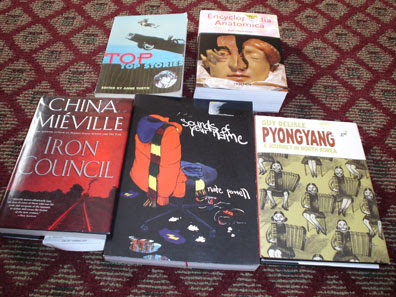I grabbed this nice Fantagraphics paperback at Powell’s books on my short short trip to Portland in the summer. Between all the pretty hardcovers of the mid-2000s, there were four or so copies of this book shoved in the comics shelves. The author’s name sounded familiar and after a cursory flip-through I put it in my very small “to buy” pile.

The title story details Van Horne’s post-college descent into mental illness. She puts it this way: “… With the help of a few books and records, a typewriter, and some marijuana, I managed to go totally insane.” For Van Horne too much time on her hands, a few books on psychology and a little faulty wiring conspired to land her in a hospital with a busted face and a broken mind. In the epilogue she says, “At any rate, despite the fact it can be colored by sickness, I believe in the reality of inspiration.”
Later in the book comes “The Psycho Drifter,” my first exposure to Van Horne. I originally read it in Twisted Sisters II, an excellent anthology edited by Diane Noomin. I know I reread that collection recently, but I am not sure why it didn’t turn up on the sidebar. Digressions aside, “Psycho Drifter” is one of those stories one ends up telling at the spent end of a long, possibly drunken, night, the kind of story that’s only good because the teller survived it to marvel at their own stupidity. Most every fun person has one of these stories, and from the comics in this collection, it seems like Van Horne has more than most people.

The subject matter of “Binge & Purge: a thrift store odyssey” is close to my heart, what with the great depictions of the hazards of thrifting under stress, and has a Carol Tyler vibe. In it, Van Horne’s children are animalistic tornadoes, she is a droopy head case, retail clerks are gnashing, moronic, monsters and her husband is kinda useless. Instead of careening into a boring self-pity party, she manages to capture the excitement of thrifting and friends along with the crappiness of being poor.
All of the stories are either autobio or “a true story,” a subtitle I imagine covers stories told to the author. Black and white, scratchy and woodcut-looking, the art veers between cartoony (like in the workplace drama “Texas Characters”) and moody realism (like in the childhood story “Molested”).
Recipe for Disaster and Other Stories has stood up to a few reads and gives up new secrets each time. Fans of autobio, the ladies of the nineties and poor people comics need to pick this up!



